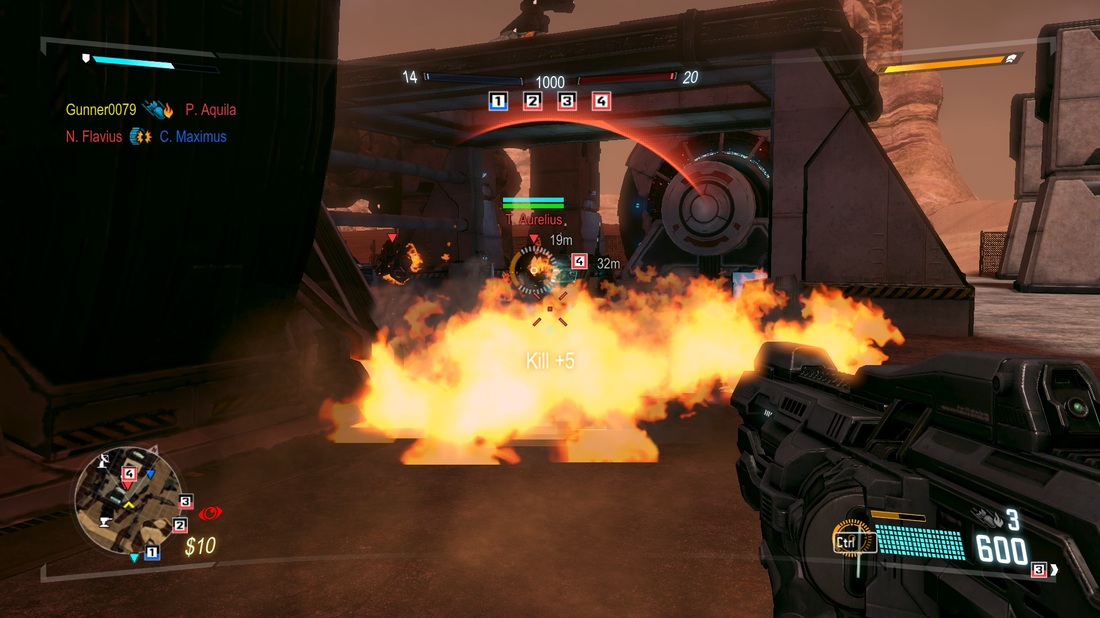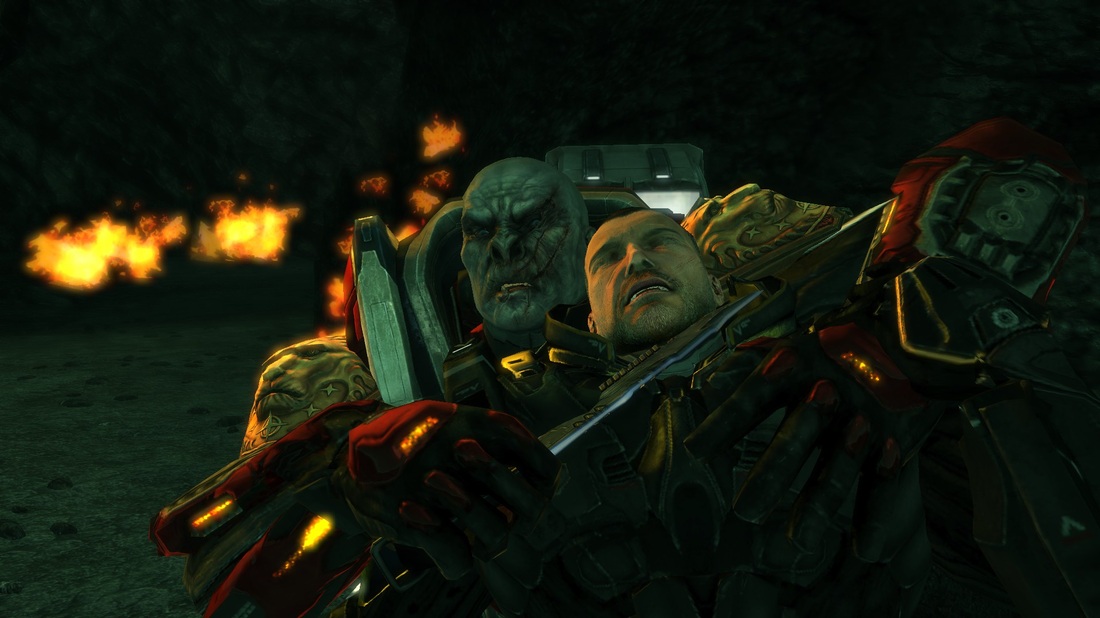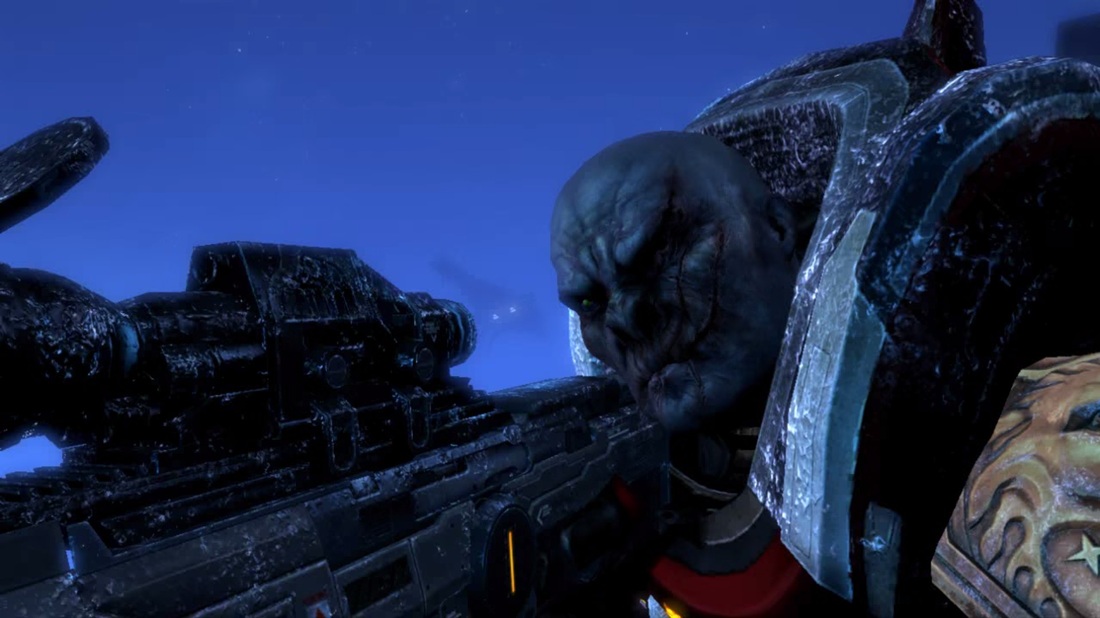 Unreal Tournament with an atmospheric insertion. The elite military team of Section 8 is tasked with protecting a planet's colonies from the murderous ARM. Gamers who prefer a less realistic arena-style shooter may want to look into this game. 1. Gameplay
Section 8: Prejudice is a game designed to highlight the multiplayer game mode. While there is a campaign, it is extremely short and has a convoluted storyline that will leave single-player fanatics wanting. Basically the Earth was being depleted of all of its resources, so the government sent out a special task force to try and take space colonies (or something to that effect). With their mission accomplished, the government dissolved the special task force, who for some reason held a serious grudge and ended up attacking the very colonies they had already taken over. Cue “Section 8”, who is tasked with protecting the colonies and defeating the “ARM” task force. Details of the story are completely irrelevant since, by the time players get situated and figure out the weapons and controls, the campaign is over anyway. Fortunately, there’s a multiplayer mode that is really the highlight of the game. Unfortunately, the multiplayer mode has to compete with every other game with a multiplayer mode on the market, so as a result the number of people playing online is extremely small. While Section 8 provides a clean experience that reminds me a lot of games like Unreal Tournament, it’s not enough to pull popularity away from its competitors like Call of Duty and Battlefield. Other than the disappointing campaign, this game does have all of the ingredients for a great multiplayer experience. The gameplay is smooth, it’s easy to understand, and matches can be as short or long as the host desires. With the ability to include AI instead of human characters, players can practice taking objectives and learning map layouts without having to gather a bunch of friends or play against much more experienced gamers. Unfortunately for Section 8, it didn’t do enough to differentiate it from games like Unreal Tournament. While certain mechanics were unique, the overall feel was very similar to what has already been on the market for a decade. I had fun with my brief playthrough of this game mostly because I enjoyed Unreal Tournament 2004. If anything, this game only made me want to go back and replay UT2004. I got bored after under 5 hours of gameplay and don’t expect to go back any time soon.
The campaign is an extremely brief introduction to the game’s mechanics. The primary purpose is to teach the player how to capture objectives, use various weapons, and combat enemies as effectively as possible. My entire playthrough of the campaign lasted less than 4 hours. Yes, this game is primarily meant to be a multiplayer game, but if developers are going to include a story-based campaign the campaign needs to be long enough to actually tell the story. Other games have gotten around this by having a simple “tournament” that the player can replay over and over, but Section 8 decided against this to instead include a very weak story. The true bulk of the player’s gameplay hours will come from the multiplayer. As there are few people left playing this game online, the value of the multiplayer mode would normally be very small. However, the game includes a system that allows AI-controlled bots to replace human players. So while a multiplayer match may include 64 characters on the map, it is very unlikely that more than 3 human players are participating. Unless a player is entertained by fighting bots, this means that the replayability of this game is significantly stunted.
I was somewhat surprised at how smooth this game was. The controls were simple and easy to determine, the main campaign was essentially an extended tutorial of the weapons and vehicles available to the player. There was very little for me to feel frustrated about after the campaign was completed. The only thing that became even remotely frustrated was that there were sometimes rough edges in the terrain. When walking or sprinting normally the player would never notice these locations, but the player also had the ability to do a sort of super-sprint. The super-sprint would be interrupted if the player ran into a wall, rock, or slight bump in an object. This could get frustrating only if the player was running through the middle of a combat zone (which I found was relatively infrequent), and even then most players could recover fairly quickly. 2. Parental Notices
For a shooter, the violence in this game was pretty mild. Weapons were almost always ballistic of some sort. The impact from these weapons may result in sparks or damage to a visible shield, but no blood was shown. Some weapons, such as the napalm mortars, could light enemies on fire. However, the fire would go out fairly quickly and the affected never reacted to the flames (other than taking damage). The only time blood was ever shown was in certain cutscenes in the campaign. It was pretty brief and was only really shown on the ground below a wounded or killed soldier. In one cutscene the main antagonist kill’s the player’s best friend by slitting his throat. However, no gore or blood is shown in this process.
Sexuality is not a factor in this game.
Substances are not a factor in this game.
Gambling is not a factor in this game. 3. Other Factors
There are no mods available for this game.
Religion is not a factor in this game.
Anti-law is not a factor in this game.
The few players that I found were still playing Section 8 were extremely skilled and had better weaponry than what I was equipped with. However, the size of the teams tends to even things out. Even if there is one player who is skilled, the bots on both sides are able to cope and can slow that player down. Overall I found that there were far more bots playing online than there were human players. While this made for a fairly relaxing environment, it did make the game a bit boring after a while.
Extreme sports will be relatively frequent in this game, especially in the multiplayer game modes. The player will enter the field of battle by dropping in from low orbit. Basically, think of skydiving minus the parachute. The player can use jet-based brakes to slow the descent which can be effective for stealthier entries, but if the player forgets to activate these brakes or simply chooses to ignore them, there is no serious repercussions. The player just hits the ground hard and is easily identifiable on enemy radar for a short period of time. The player can also do a sort of super-sprint. If the player charges the sprint for a few seconds, he will erupt into a constant dash that can cover large areas of landscape in a matter of seconds. It’s an excellent way of getting back in the battlefield but is entirely unrealistic.
Magic is not a factor in this game.
Weapons of Mass Destruction Towards the end of the game, the main antagonist decides to use an unspecified biological weapon on a human-colonized planet. The planet, previously uninhabitable, has been “terraformed” using some sort of giant filtration system. The antagonist plans to insert the biological weapon into the filtration system, turning the planet’s air supply toxic and killing all of the colonists. The player prevents this from happening. Human Disfigurement
The leader of the ARM was probably human at one time. He has either undergone some seriously horrible cosmetic surgery or his face has been so heavily damaged by genetic modifications and battle scars that he looks more demonic than human.
0 Comments
Leave a Reply. |
Like what we do? Want to see more? Donate to the site using the button below!
Not sure what a term means? Read the definitions!
Not sure what a review section is about? Find out more information!
|













 RSS Feed
RSS Feed